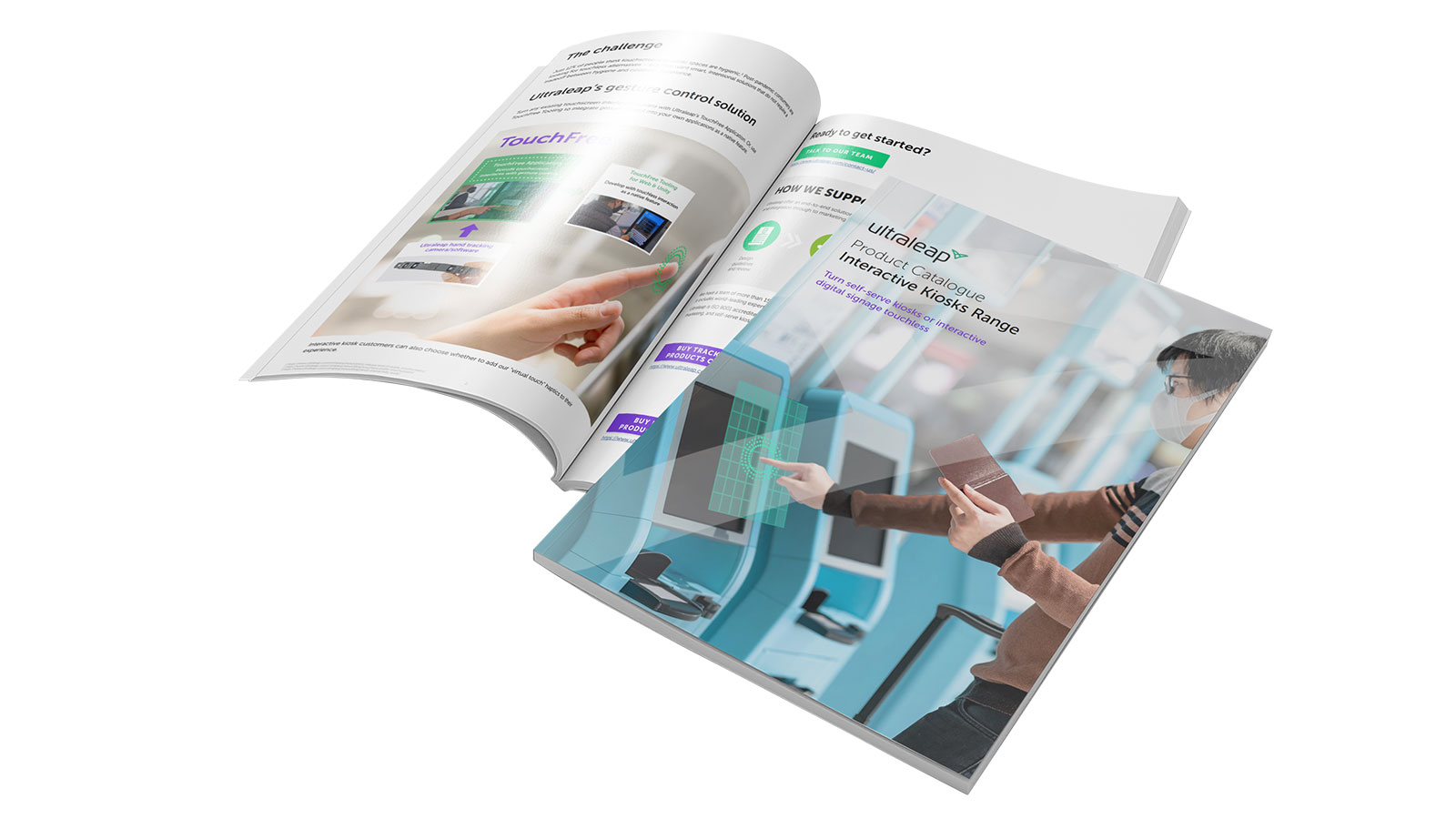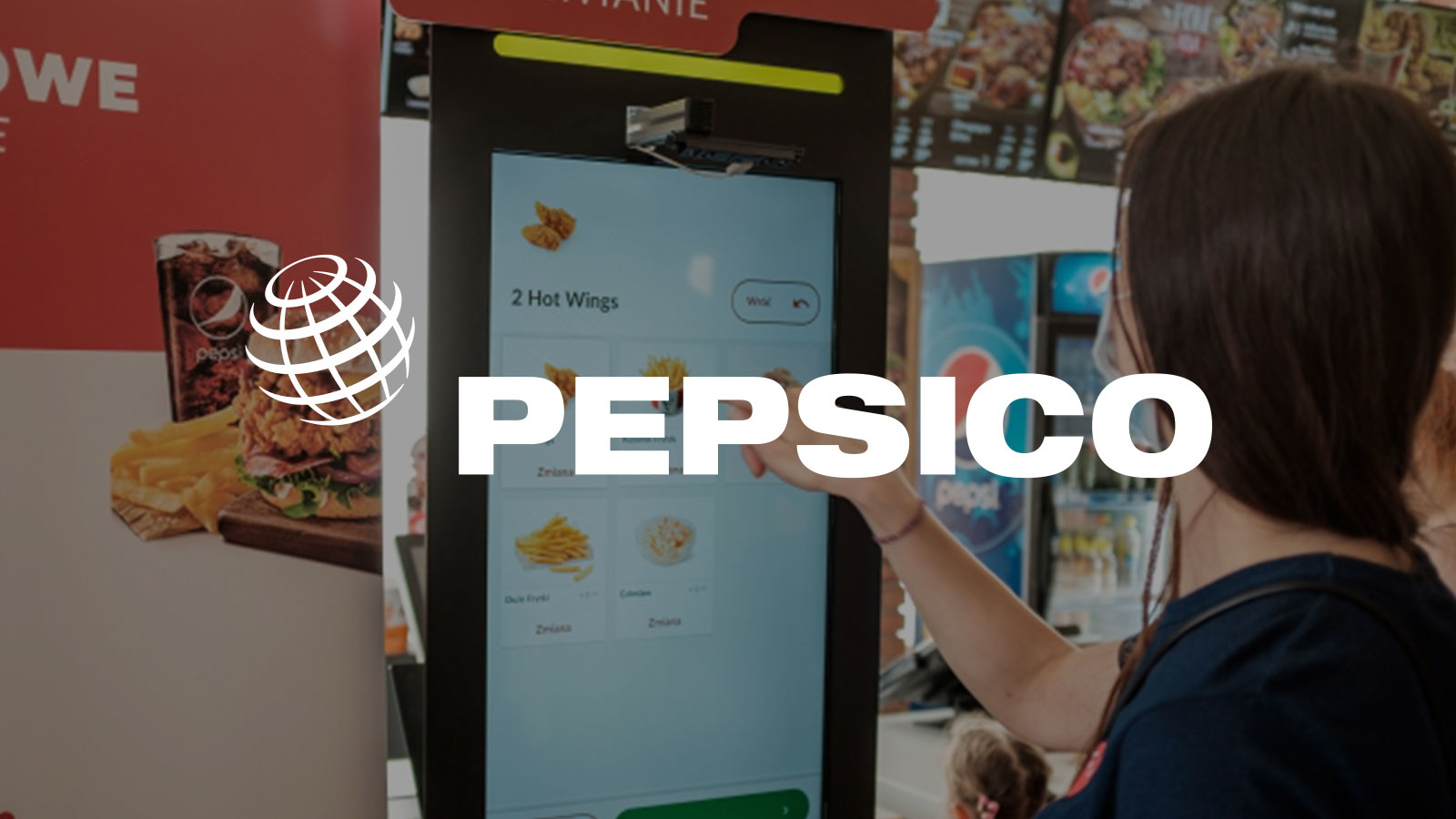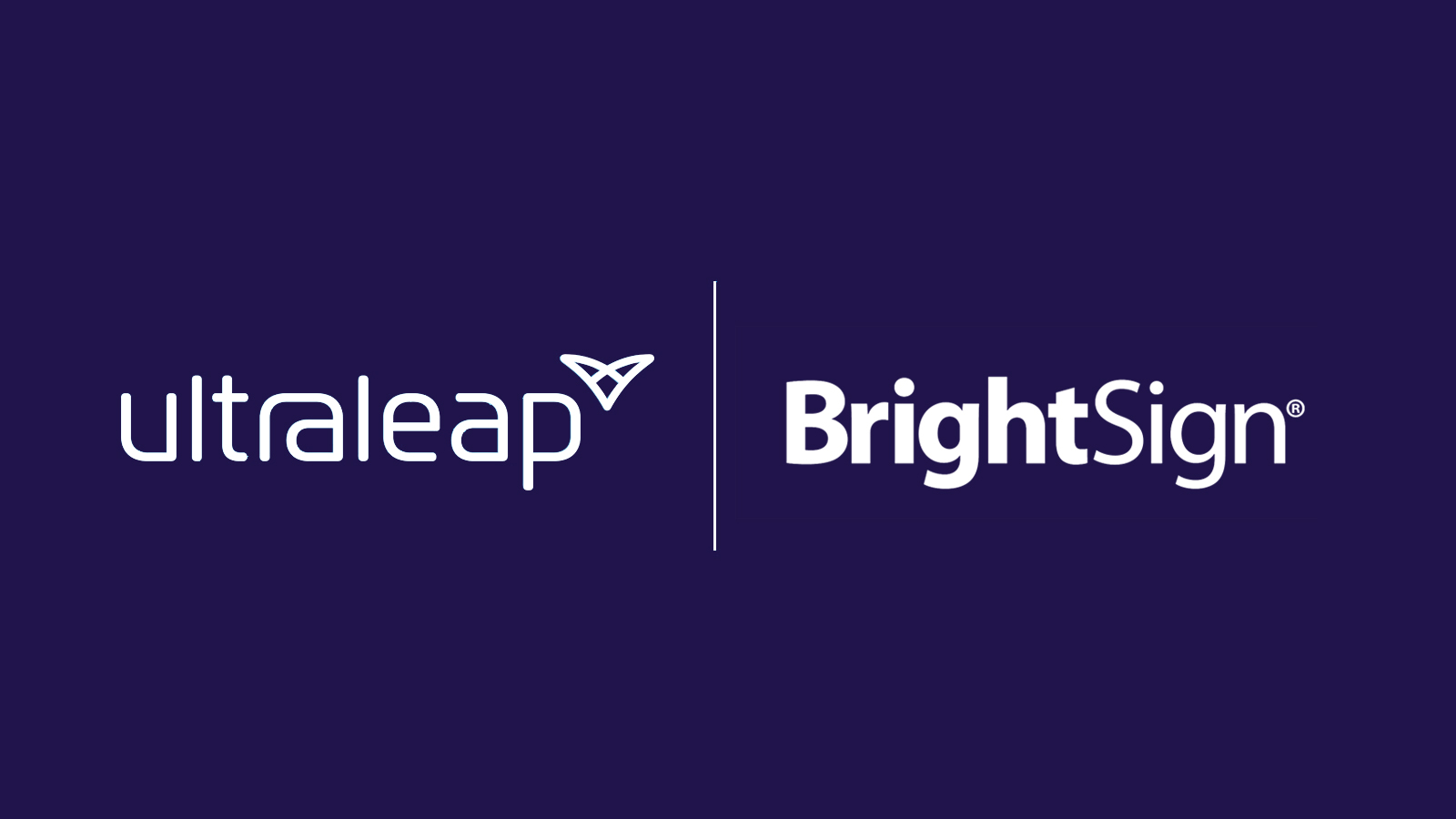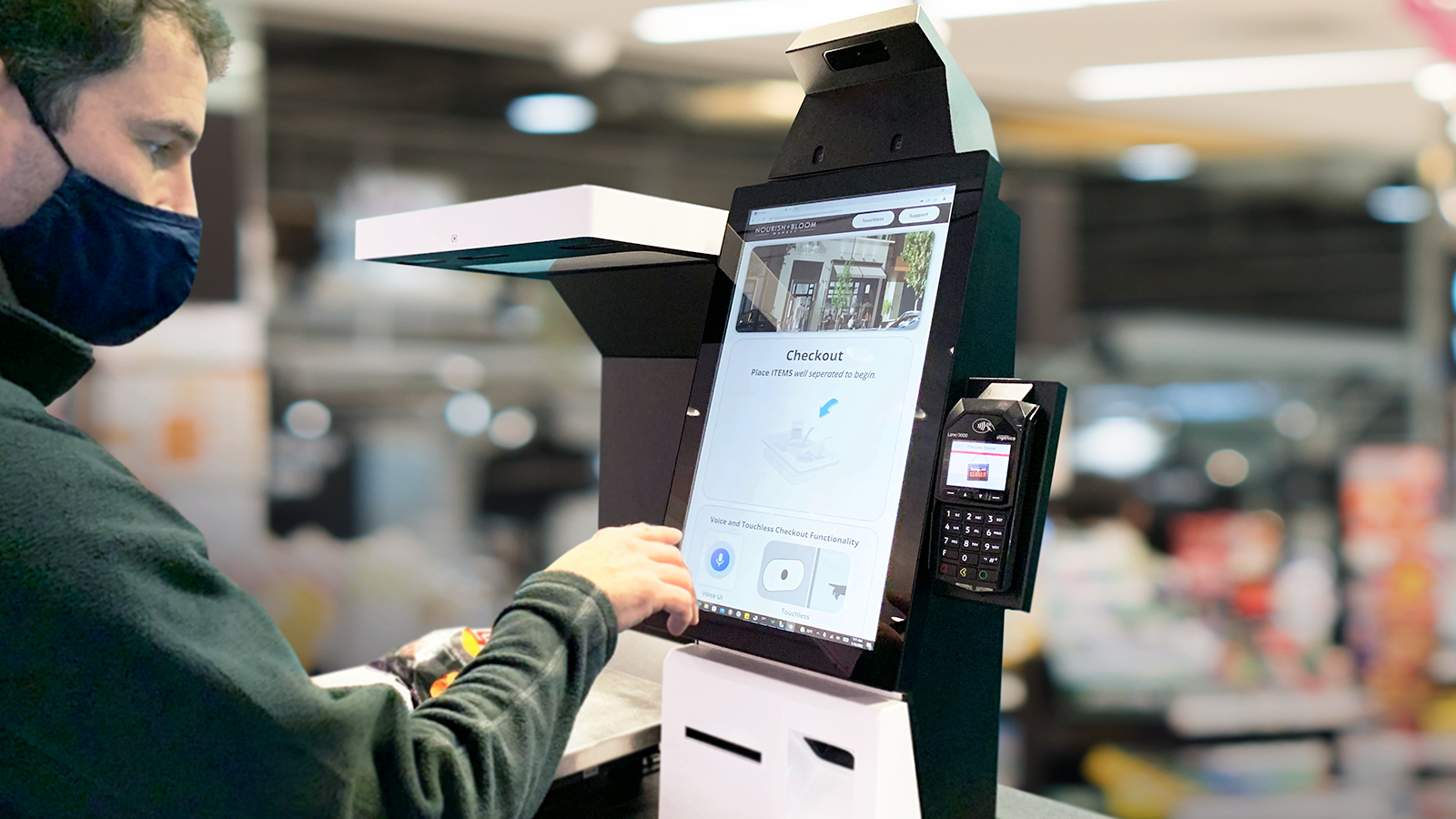
Future of retail technology: Touchscreens or Touchless?
Posted; August 4, 2022
During the pandemic, we witnessed attitudes shift against public touchscreens. In 2022, are those attitudes here to stay? And what does this mean for the future of retail technology?
Ultraleap ran a survey across the UK, US, China, and Japan with over 2000 respondents and more than 500 in each market. In this research, we delved into post-pandemic attitudes towards public touchscreens and analysed how these could impact retail and technology trends.
This blog takes you through some of the key findings of the study. For more information, including detailed country-by-country breakdowns, download the full consumer report.
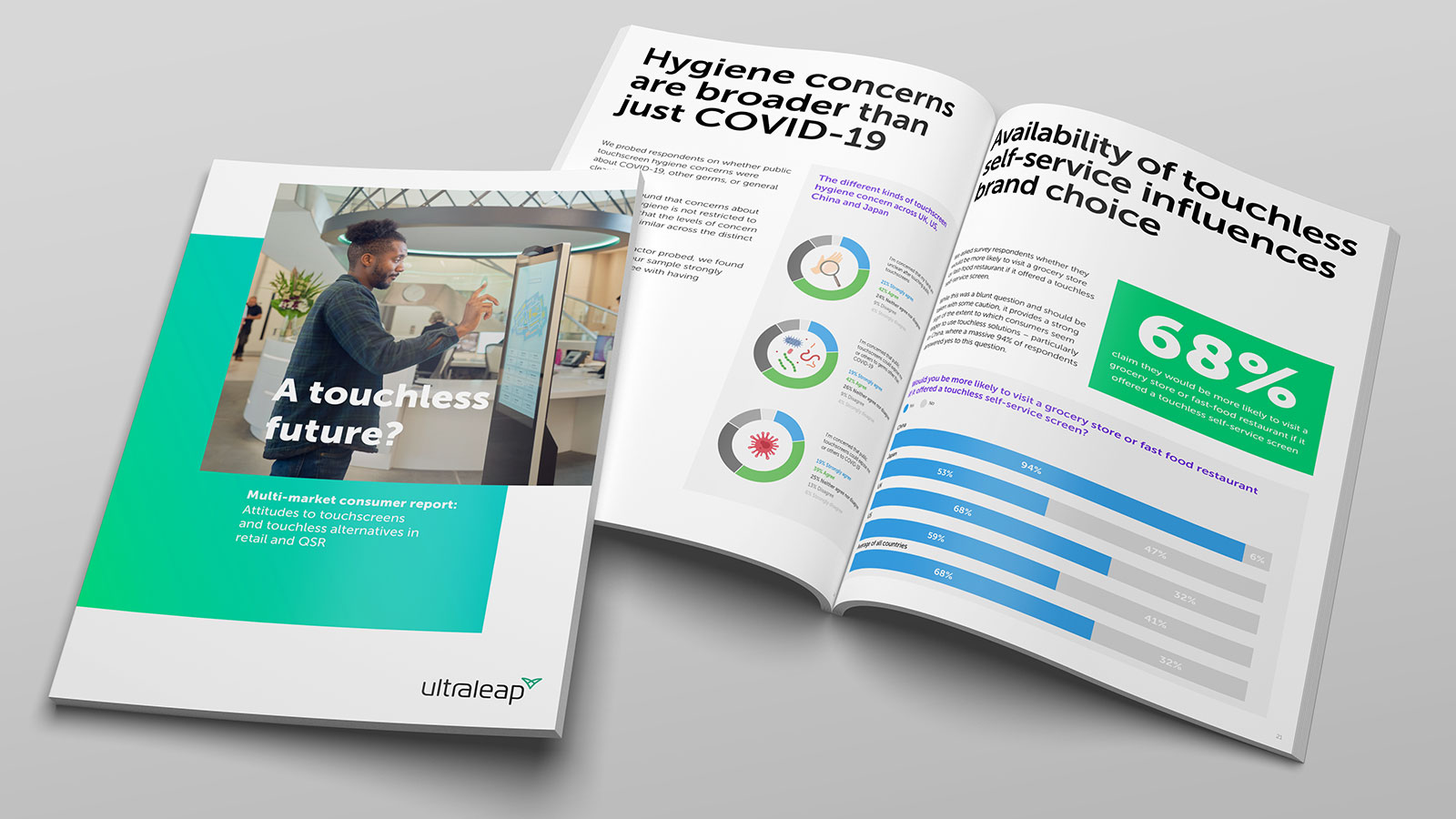
Consumer report: A touchless future?
Key findings on touchscreens and touchless technology in retail
This study builds on the results of our previous survey in May 2020, at the beginning of the pandemic. This found that around 80% of people perceived public touchscreens to be unhygienic.
Other studies showed similar trends. A large 2020 Capgemini study found that 77% expected to increase their use of touchless retail technology to avoid touchscreens during the pandemic. 62% expected to continue this behaviour post-pandemic.
Two years on, the pandemic is at a less acute stage in many markets. We wanted to find out if these attitudes have led to long-term behaviour change, and what the commercial impact might be.
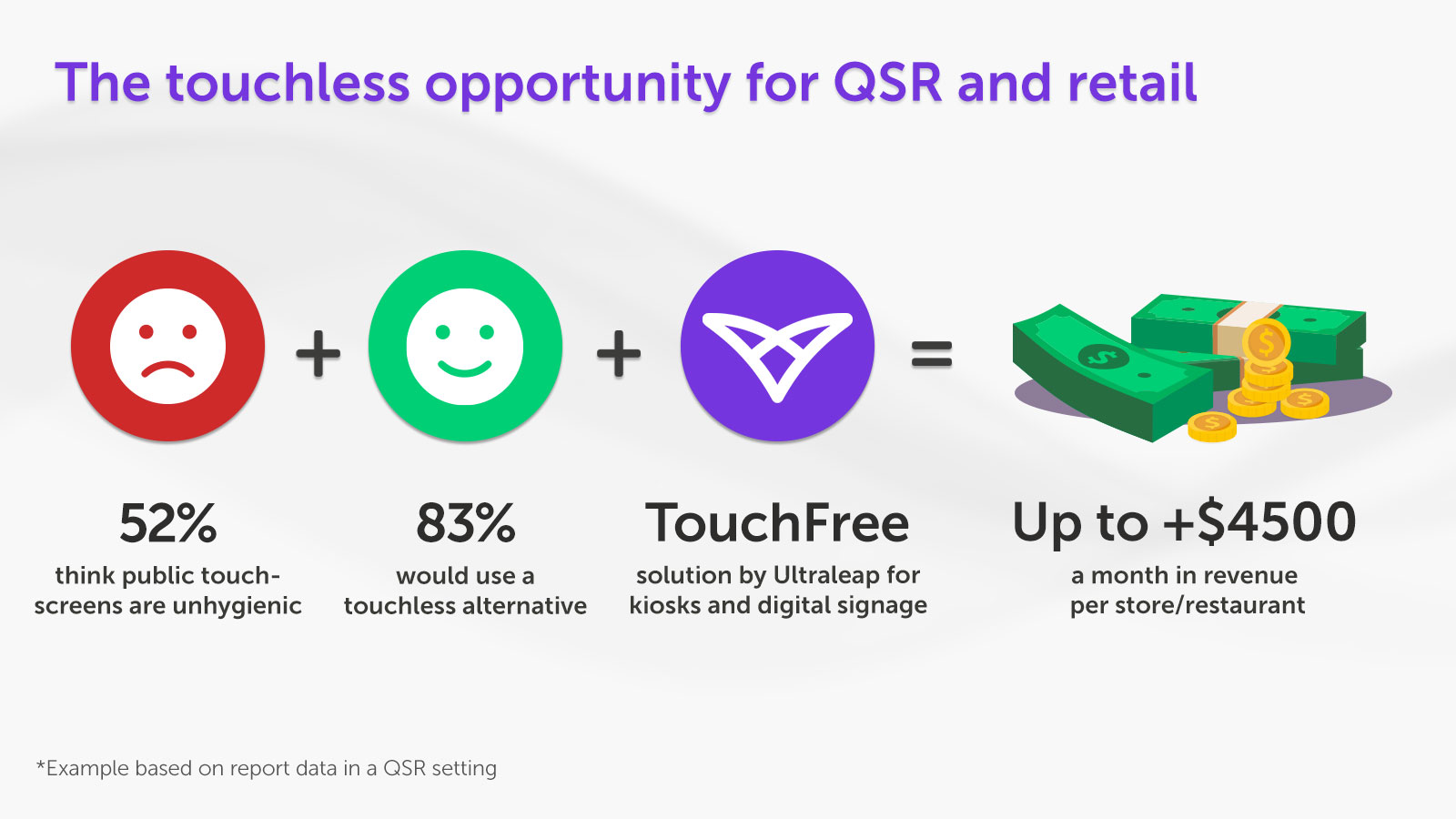
Our study found that concern around touchscreen hygiene remains prevalent across all markets in 2022, and covers concerns beyond COVID-19. Most respondents are changing their behaviour at least sometimes to avoid germs on public touchscreens. A sizeable minority are always changing their behaviour.
We also found that the public is not only open to but actively positive about touchless solutions – making this a solvable problem and a commercial opportunity to shape the future of retail.
Consumer views on touchscreen technology in retail and QSR
Our study found that most consumers still believe public touchscreens are unhygienic, with 52% of our multi-market sample agreeing or strongly agreeing with the statement "I think public touchscreens are unhygienic.”
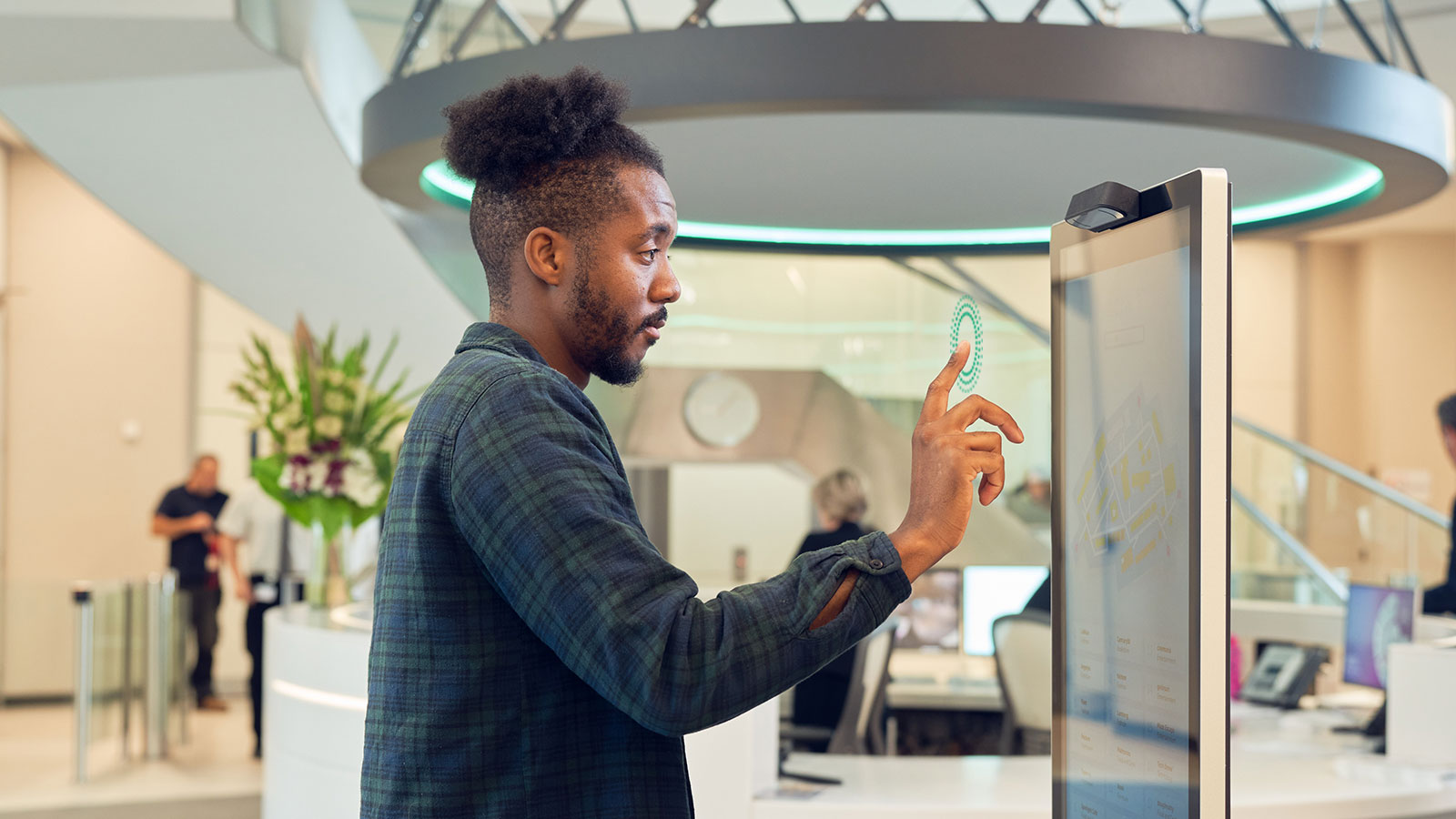
Most consumers also report at least sometimes changing their behaviour (for example using hand sanitizer) around public touchscreens to avoid germs. A significant 29% report always changing their behaviour.
We looked in detail at what some of these touchscreen avoidance behaviours were. 45% of our multi-market sample reported having used hand sanitizer after touching a public screen. Significant numbers also report touching the screen as little as possible (25%), or even avoiding places where they must use a touchscreen (10%).
These touchscreen avoidance behaviours are likely to have a direct commercial impact. That a sizeable 25% of consumers touch the screen as little as possible limits the opportunity for upselling at self-service. Meanwhile, that 10% claim to avoid places where they must use touchscreens indicates self-service touchscreens may lead a small but significant group of consumers not to choose specific brands, restaurants or stores.
We also found that hygiene concerns are broader than just COVID-19. Whether it's COVID-19, germs in general, or feeling their hands are unclean, consistently around 60% of our sample agree or strongly agree with having concerns. It implies this is a broad public attitude here to stay, and which will impact the future of retail technology.
Consumer views on touchless technology in retail and QSR
The vast majority – 83% across the four samples – claim they would be open to using a touchless solution like the video in a store or restaurant.
68% also claimed that they would be more likely to visit a grocery store or fast-food restaurant if it offered a touchless self-service screen. While this was a blunt question and should be taken with a pinch of salt, it provides a strong sign of the extent to which consumers seem eager to use touchless solutions. These trends in retail technology are particularly evident in China, where a massive 94% of respondents answered yes to this question.
How the "hygiene-sensitive" consumers group impacts the future of retail technology
We identified a significant group of consumers that strongly believe touchscreens are unhygienic. They may also demonstrate behaviours to avoid touching screens – such as going to staff, or not visiting restaurants or stores at all.
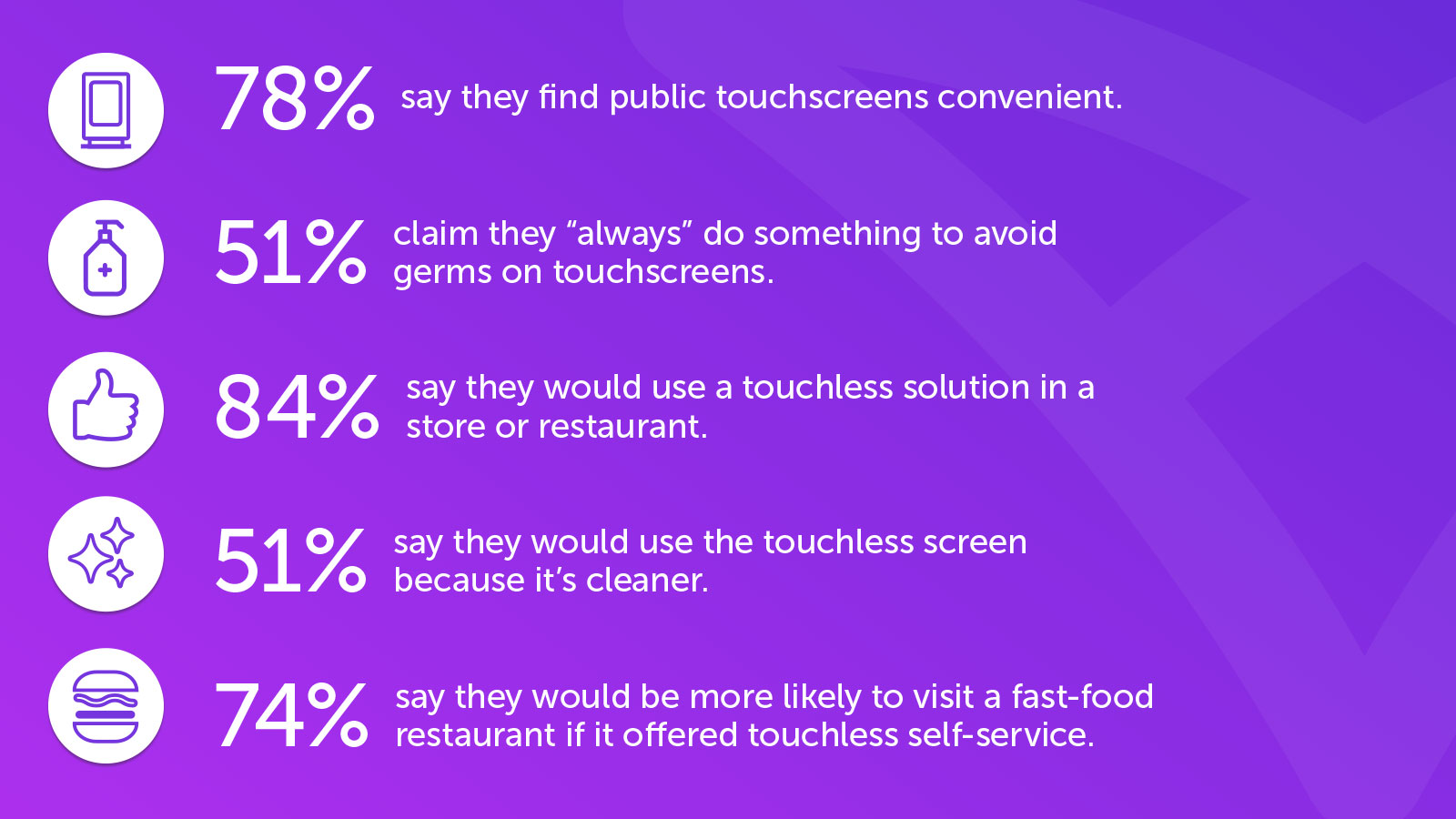
The data points in this survey can help us try to size this group of consumers who are strongly “hygiene sensitive”, and analyze the opportunity of using emerging retail technologies to serve them better.
We found that 21% of consumers strongly agree with "I'm concerned my hands are unclean after touching public touchscreens.” Of that group:
- 78% say they find public touchscreens convenient.
- 51% claim they “always” do something to avoid germs on touchscreens.
- 84% say they would use a touchless solution in a store or restaurant.
- 51% say they would use the touchless screen because it’s cleaner.
- 74% say they would be more likely to visit a fast-food restaurant if it offered touchless self-service.
This group of consumers are strongly concerned their hands are unclean after using a public touchscreen. But they also find touchscreens to be convenient. We can hypothesize that there is a behavioural segment who would use self-service if it were touchless, rather than going to the counter.
An example of why this matters is that in quick-service restaurants, order sizes are typically larger at self-service than at the counter. This means that persuading even a small percentage of consumers who would have gone to the counter to use self-serve instead can result in a significant uplift.

Touchless: The next stage in retail digital transformation?
Of course, any concerns about uncleanliness are not enough to stop significant proportions of consumers from using public touchscreens. Most consumers still find touchscreens easy to use and convenient.
This is good news for companies who have come to rely on self-service touchscreens in customer experience, as the problem isn’t the self-service itself – it’s touching the screen.
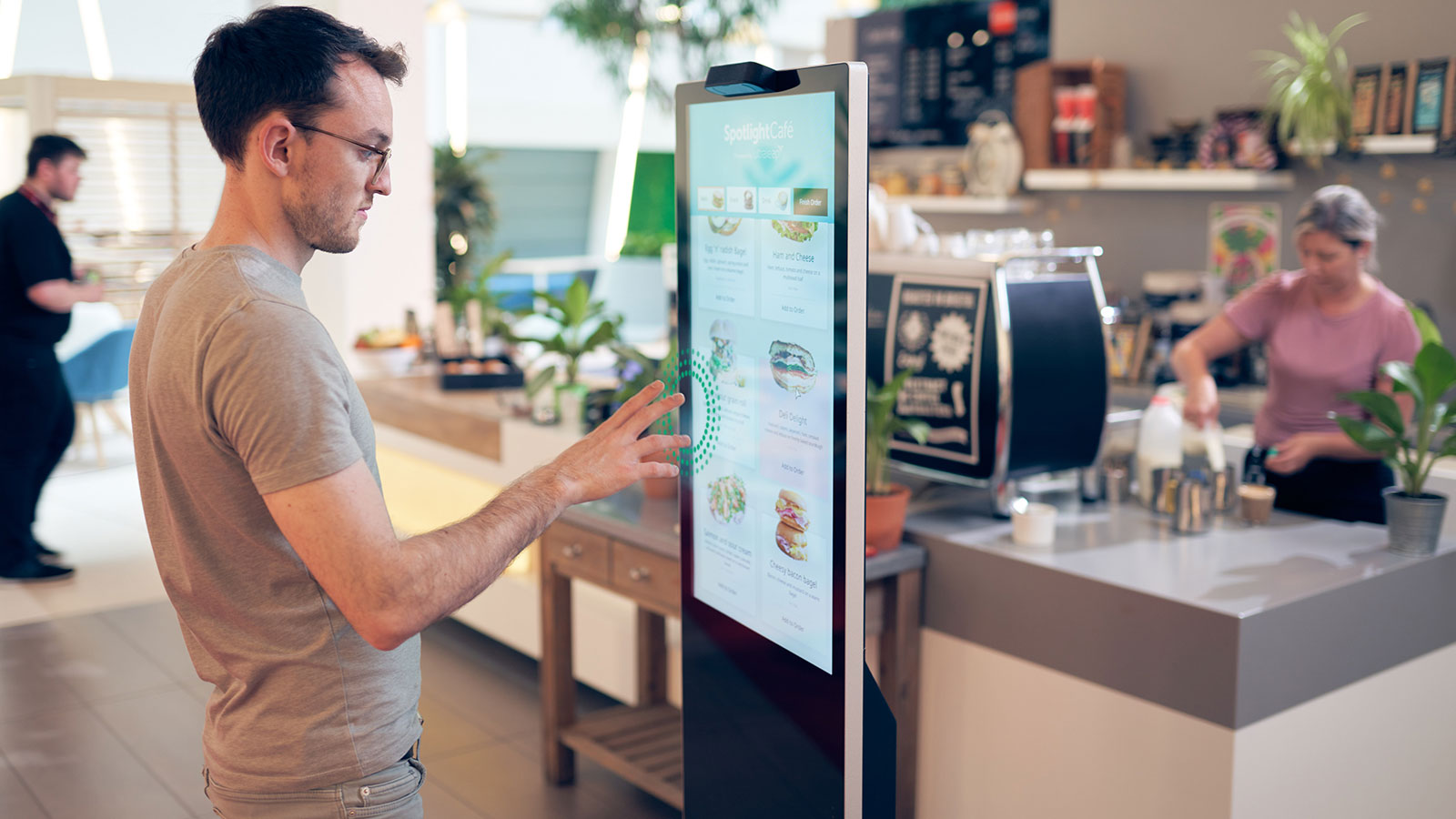
Further good news is that we found the problem of touchscreen hygiene is solvable. The public in our four markets is open to the idea of touchless solutions, with many preferring to use a touchless screen above a touchscreen. Many also claim that the option of a touchless screen would make them more likely to visit a store or restaurant.
Touchless solutions, such as Ultraleap TouchFree, look like a consumer-approved opportunity for retail and QSR companies looking to continue their digital transformation.
Overview of study methodology
The survey was designed without free-text entry fields to remove the need for qualitative analysis. The survey was in five parts:
- Public touchscreen usage
- Public touchscreen attitudes
- Public touchscreen hygiene attitudes & behaviour
- Touchless screen attitudes & expectations
- Interaction preferences in retail and fast-food restaurants
We used SurveyMonkey’s targeted panels to strive toward a nationally representative sample of 500+ respondents in each market.
The samples were balanced for age and gender, and in the US, also for pay. We achieved a robust sample with a narrow margin of error of +/- 4%, and a 99% completion rate.
For a detailed summary of the study methodology, including more detail on the sample and survey limitations, download the full consumer report.

Consumer report: A touchless future?
Explore our products, blogs, and case studies to find out more.
